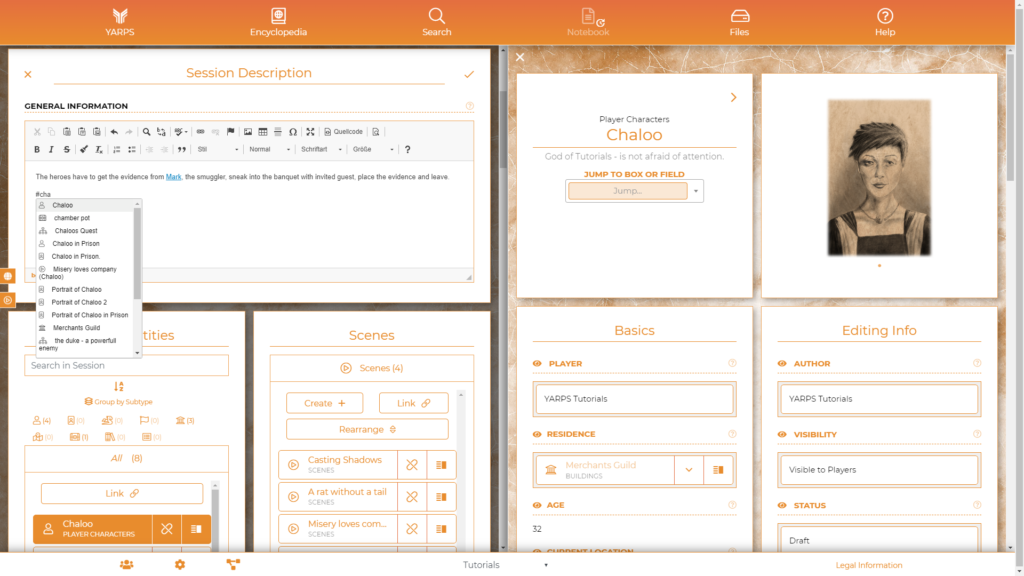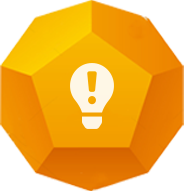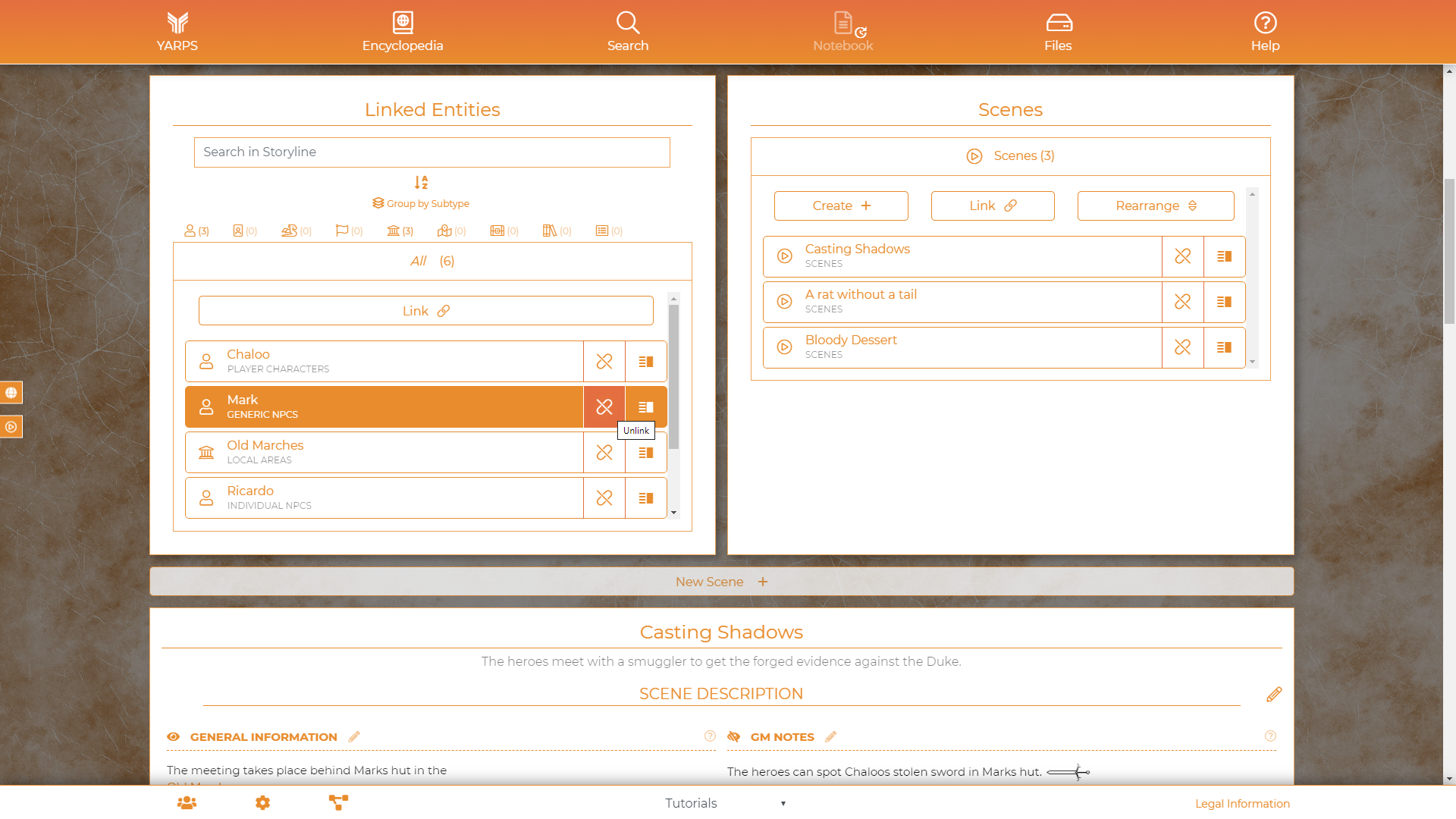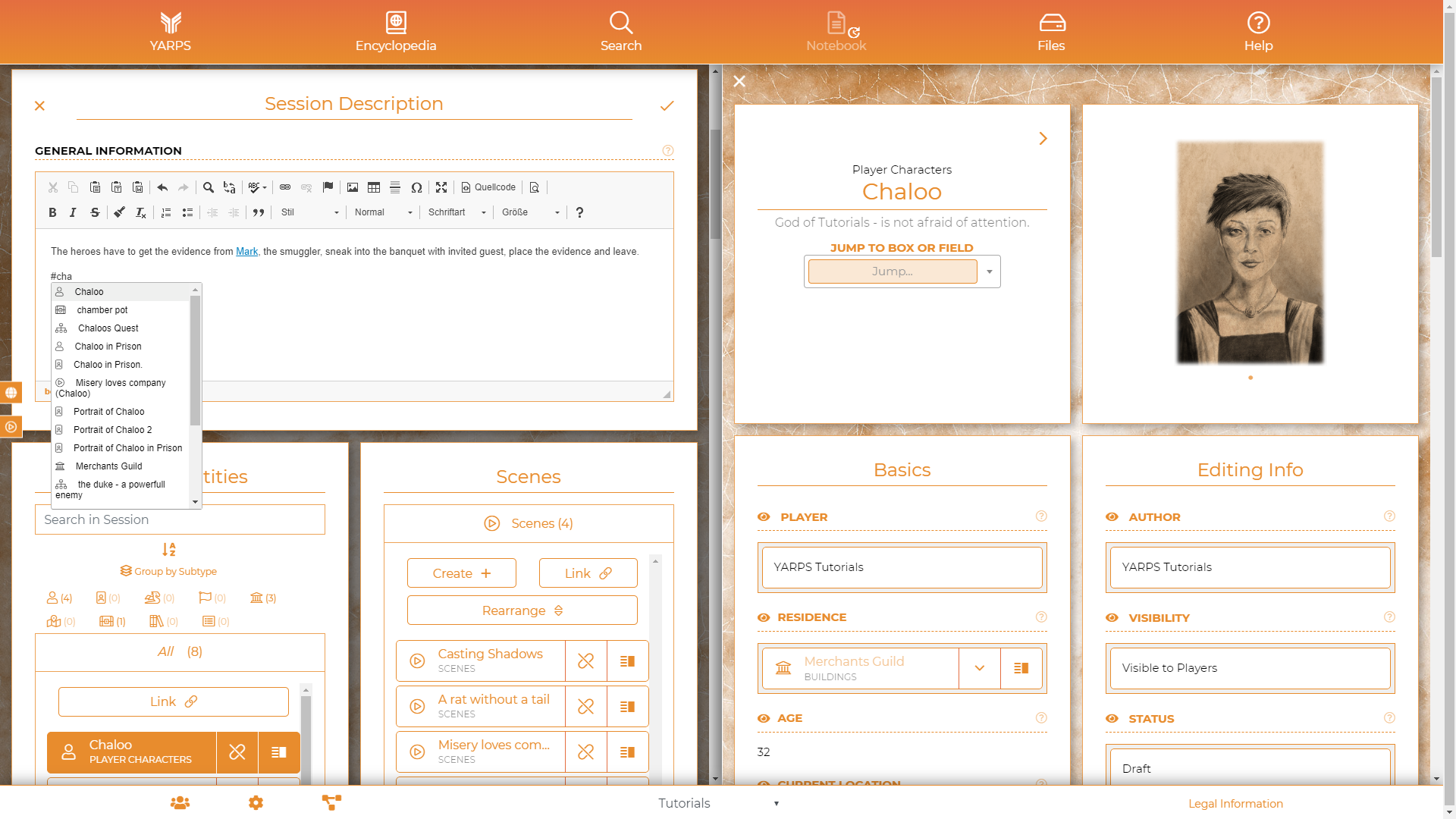What sets YARPS apart from wiki-based types of world building tools is its outstanding dynamics based on smart entity relations. Interconnections between elements are an essential part of a living world. The son of a king is treated differently from the son of a shoemaker, after all. A famine starts to take its toll among the poor. YARPS understands correlations like these and is able to draw logical conclusions from them.
Every entity you put into YARPS, be it an NPC, an animal, an item or a god, is endowed with smart relations you can customize. What does that mean in practice? Imagine a character sheet of one of your players. Aside from abilities and numbers like strength or dexterity – if you decided to use these – you’ll find mostly describable elements: name, place of birth, faction, language(s), race etc. Of course, you can customize all of these, as mentioned here. The real power lies within the relations. You can for example have YARPS list all characters who live in the city of Sunion. And if the emperor decides to rename the city to Moonion, you only need to change it on the record of Sunion itself. YARPS then updates all relations automatically. All NPCs born in Sunion, all player characters living in there, all animals, all quests, all items. Anything related to Sunion will be updated. These element relations are pretty nifty already when thought about in static terms, but as soon as you start using them in your campaign management and your story-telling, their true power will come to life via the detailed tracking of change events. And of course you can group elements together, adjust their visibility and build sets and subsets. Regardless of whether they’re media elements, story elements or other types of elements.
And just as easy as linking your entities intelligently is creating new ones by simply entering new information. Imagine you’re creating a new character with a whole new background and you come up with a perfect hometown for him that hasn’t an entry yet? Not a single drop of sweat shall wet your face: by filling an attribute field with new information YARPS will ask you for an appropriate category, automatically create a new entity and link it correspondingly.
But how does does this work exactly? There are plenty of ways to create links between entities, and YARPS even does create a lot of links by itself. To learn more about the different ways of entity linking, we recommend watching our tutorial video.
Character and Faction Relations
No matter if your characters are humans, elves, or goblins: all intelligent beings nurture social relationships, and some more than others. We can learn much about a person when we look at their friendships or rivalries. Maybe we’re looking for allies against a powerful enemy, invoking the proverb “The enemy of my enemy is my friend”. Or we might want to know who we will likely antagonize by accepting a job from a certain employer. Character links help us organize these aspects neatly within one entity.
YARPS provides different options to document relationships in an entity. For example, sympathy or conflicts between two characters can be displayed as a sliding scale. When you move the indicator from friendly to hostile for one character this is automatically applied to the other entity.
For more personal links you can customize characters’ attributes freely. Imagine lovers, brothers in arms, clones, and many more. There’s no limit for your creativity.
You can also choose from a broad variety of display options to visualize social connections, such as cluster views, colorful graphs, or family trees. Of course, all of these features are available not only for characters but for entire groups or factions, such as guilds, gangs, or nations.

Automatic Linking
With every new entity in your instance, new potential connections are created. Integrating all those links in your texts manually would mean a lot of work. That’s why YARPS does these tasks for you. With its automatic name recognition, YARPS searches all texts for names of your entities. When it recognizes the name of an existing entity, YARPS will automatically create a link. This even works when the entity in question didn’t exist when you wrote the text initially. You don’t have to do anything yourself.
You can also add multiple aliases to an entity that are linked automatically. YARPS is able to recognize a character under their nicknames or pseudonyms, a city under its name in the local language, or an item regardless of singular or plural forms.



